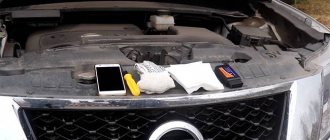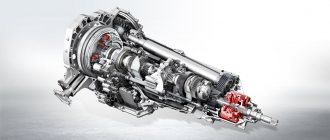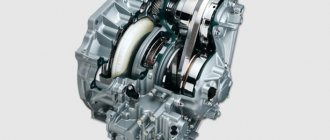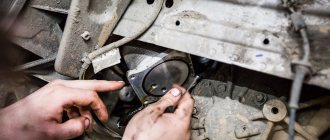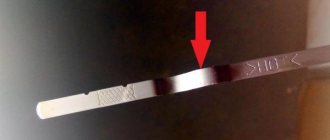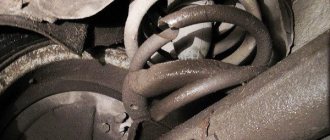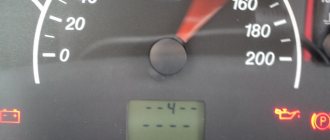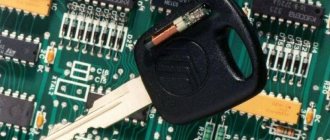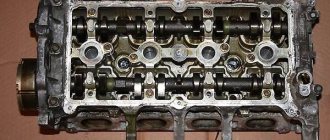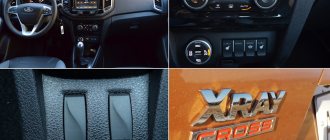Of the various CVTs, in this article we will talk about a V-belt CVT, because it is precisely this CVT that is installed on the Nissan Murano, and it has its own name - Xtronic.
CVT is a colloquial expression. In fact, it is a CVT (Continuously Variable Transmission) continuously variable transmission for the most painless transformation of the gear command. For the first time, a V-belt variator was installed in the middle of the 20th century on a DAF car, and at the end of it, Nissan Motor Corporation was already in full use, which used the products of its then “daughter” Jatco.
What kind of variator is on the Nissan Murano
On the Nissan Murano of the Z50 and Z51 generation, a very “decent” V-belt variable-speed transmission JF010E (RE0F09A/B) is installed together with the VQ35DE engine, in general, due to compliance with environmental requirements, it is somewhat inferior to its predecessor CVT RE0F06A, but much more reliable than next JF017E, already installed on Nissan
Murano Z52
Units of the former subsidiary of Nissan Motor Co. Ltd - Jatco ("Japanese Automatic Transmission Factory"), specializing in the production of the most reliable CVTs in its class, including for Nissan Murano - Hyper and Xtronic, installed by many of the world's leading automakers.
Both CVT gearboxes produced for Nissan due to their long-term flawless operation have proven high reliability and sufficient ease of repair, while many manufacturing companies recommend replacing the entire unit, which is expensive.
Diagnostics of the JF017E variator
Repair of the Jatco JF017E variator is preceded by diagnostics. It is possible to check the performance of the transmission and the correctness of gear shifting when driving a car with acceleration and braking. Gear changes should occur smoothly without jolts or slipping of the gearbox.
Checking the continuously variable transmission using computer equipment allows you to read and decipher the error codes of the electronic control unit. To carry out mechanical diagnostics and troubleshoot parts, the unit is dismantled and partially or completely disassembled. When visually inspecting parts and identifying chips in the pallet, a conclusion is drawn on the following issues:
- Real wear and tear on components.
- Feasibility of repairs.
- Preliminary cost of restoring functionality.
If symptoms appear indicating a malfunction of the CVT transmission, it is recommended not to continue driving, but to use the services of a tow truck. Eliminating the malfunction at the first stage allows you to avoid costly repairs of the unit.
Design and principle of operation of the Nissan Murano variator
The box is a classic V-belt, the body of which contains the corresponding belts, couplings, discs and gear oil. By transmitting torque directly to the wheels, the CVT changes the length and tension of the belt, and therefore the gear ratios and torque, in accordance with the command received.
The Nissan Murano CVT, constantly changing gear ratios, replaces a completely classic gearbox. It has, as a rule, six virtual gears, as well as the ability to switch to manual control mode.
DIY JF017E repair
To independently repair the Jatco JF017E variator, you need to know the structure and operating principle of the transmission, as well as have practical experience in disassembling the unit. You can repair the main components of a continuously variable transmission with your own hands.
- Repair of hydraulic unit. To restore functionality, the unit must be completely disassembled and each plate washed. If there are metal shavings in the oil, the solenoids must be replaced.
- Transmission repair due to overheating. The cooling system needs to be cleaned. The radiator is dismantled for cleaning. To prevent overheating, it is advisable to install an additional radiator and change the oil more often.
- Planetary gear repair. To replace or repair a unit, the unit is removed from the car and disassembled. Typically the input shaft or sun gear needs to be replaced.
- Torque converter repair. The pump wheel breaks. It is necessary to cut the body along the weld seam. After replacing parts, the body is welded.
- Adjusting gear ratios. After repair, the JF017E unit must be filled with oil and the transmission calibrated in order to shift gears correctly. All sensors and settings of the control unit are first reset. Next, the car accelerates and the gas is released to reduce speed. You do not need to press the brake pedal for successful calibration.
Repair operations for the Jatco JF017E variator are best entrusted to our experienced specialists at the auto center, who guarantee the quality and accuracy of the work.
How long does the Nissan Murano CVT last?
The Nissan Murano JF010E (RE0F09A/B) variator is very reliable, but its operating time is of course affected by care and timely maintenance, as well as the mode of use and the priorities of the car owner.
Structurally, the service life of the Nissan Murano Z51 variator is very dependent on the loads received and the temperature conditions, so long-term:
- Significant loads on highways and slipping on slippery surfaces, as they lead to overheating and gradual destruction of its parts and components with the release of corresponding chips.
- Towing trailers or cars, as they can cause the ECS (electronic control system) to “jam”.
- Interruptions in maintenance, including replacement of lubricants. During a run of 150 thousand km, it is advisable to perform this procedure 3-4 times, and the first one after 15 thousand km.
The Nissan Murano CVT is equipped with a modern cooling system, as a result of which its service life of 0.2 million km is usually extended by one and a half times. This, of course, is facilitated by following all the above recommendations for operation and maintenance.
You'll be third
The tenth family was replaced by the CVT8 series. These are third generation CVTs. On our market it is represented by models JF016E and JF017E. Despite a complete generation change, the new CVTs are built on the basis of their ancestors.
The JF016E variator replaced the “old man” JF011E and inherited its engine range. Among its carriers, for example, are the new generation Nissan Qashqai and X‑Trail. The JF017E and JF010E series swapped places in the same way - the new CVT was installed under the hood of the fresh Nissan Pathfinder and Murano crossovers, as well as the Infiniti QX60/JX35.
The third generation units differ from each other more than their predecessors. Strengthening the elements of the JF017E variator to handle higher torque required the use of a pin belt (the so-called chain), while the JF016E retained the usual plate belt.
The heart of the JF017E variator: cones and a pin belt (the so-called chain). There are some minor nicks on the cones, so they will be sent for grinding. Pin belts for Jatco are made by LUK; they cost about 20,000 rubles.
The heart of the JF017E variator: cones and a pin belt (the so-called chain). There are some minor nicks on the cones, so they will be sent for grinding. Pin belts for Jatco are made by LUK; they cost about 20,000 rubles.
The design basis of the CVT8 family is twofold. At one pole is the hardware from the tenth series that has been simplified in order to reduce the cost of production, and at the other is the excessive complication of the control system. Both of these led to a noticeable, one and a half to two times, reduction in the service life of the units. However, CVT8 CVTs remain maintainable. The cost of their full restoration is even lower than that of representatives of the tenth family, and usually does not exceed 150,000 rubles
.
The valve body is the most demanding unit of the CVT8. The manufacturer saved as much as possible on the “iron” base and removed the stepper electric motor, which on CVTs of the tenth family controlled the oil pressure to change the gear ratio in the cones. The design of the valve body was changed, using additional solenoids of a new type. Moreover, here too the manufacturer was greedy, choosing solenoids that were cheaper to manufacture and had different output parameters. Therefore, with a new variator or valve body there is a disk with individual calibrations for each valve. If you do not register them in the unit control unit, the variator will not work correctly or the car will not move at all.
Fuel consumption
The Nissan Murano Xtronic variator, like all constantly changing transmissions, slightly reduces the car's maximum speed and fuel consumption. So, per hundred kilometers, this car has the following data (in liters):
- Urban conditions – from 10 to 15
- Mixed cycle – from 8 to 10
- On the highway - from 7 to 8
Considering the engine of the 3.5 liter all-wheel drive model, it should be noted that there is a significant decrease in gasoline consumption from the first to the third generation - on average from 12.3 liters to 10.2 liters. In addition, on highways, consumption increases with increasing speed. So, at a speed of 120 km/h it is 9-10 liters, at 140 km/h - about 12 liters, and at 170 km/h it increases to 14-15 liters.
Main parts, their purpose and circuit diagram
Let's look at the schematic diagram of the variator device. For each car model or any other equipment, engineers develop a special case that has minor design features. In general it looks like this:
Let's consider the features of the operation of the variator on a car of each part, its role and features of the device:
- Sliding pulley. These are two truncated cones with straight or toroidal concave surfaces, mounted on one axis. One of them is fixedly fixed on the shaft, and the second has a small stroke. As a result, the stationary element is the leading one, and the movable element is the driven one.
- V-belt. Its body is formed by a pair of steel strips on which special plates are strung. The engagement is formed in the grooves, and the working part of each plate is a cone-shaped end. Instead of a belt, a complex chain of a special shape can be used.
- Hydraulic transformer. This is an autonomous unit that allows you to smoothly regulate the change in torque using hydraulic force. Its structure is quite complex.
- The differential is a gear with helical teeth that transmits torque to the driving pair of wheels of the car. It is characterized by special wear resistance of working surfaces.
- The planetary mechanism ensures the transmission of rotation to the drive axle in various directions. Unlike the classical scheme, it contains two rows of elongated cylindrical satellites, which reduces the load on the teeth.
- Hydraulic pump. This part is brought into operation using a hydraulic transformer, which ensures constant maintenance of the pressure of the functional fluid. Thanks to this connection, the hydraulic cylinders are constantly in operation.
- Control is carried out by a microprocessor that sends signals based on processing data from various systems and sensors. In particular, ABS and electronic fuel consumption control play a role.
CVT service life
The manufacturer of the Nissan Murano variator, Jatco, provides a guarantee for its products that matches the service life of the vehicle. However, you need to understand that 200-300 thousand km. the mileage may someday be overcome.
Therefore, it is necessary to carefully monitor the periodic, at least every 50-60 thousand kilometers, replace lubricants completely, clean or replace their filter elements.
Important! Fans of drive, slipping and/or drifting do not need any CVT.
It will only interfere with their enjoyment, and will also constantly introduce additional, and considerable, expenses. The same applies to summer residents who like to drag heavy trailers behind them and generally overload the car.
How to properly maintain the JF017E variator
To operate the JF017E continuously variable transmission for the period stated by the factory without repair, you must comply with the restrictions and adhere to the manufacturer’s recommendations:
- Be sure to change the oil and filter on time. The service interval is reduced when the variator is used in difficult conditions.
- Fill the system only with original oil that meets the manufacturer's specifications.
- Constantly monitor the transmission temperature. Maintain the radiator and clean the cooling system. Avoid city traffic jams if possible in hot weather. In case of constant operation of a car with a JF017E variator in high temperature conditions, you need to install an additional radiator.
- Avoid aggressive driving with dynamic acceleration from a standstill and emergency braking.
- Always warm up the engine and continuously variable transmission for about 10 minutes before driving after a long period of parking. In winter, the warm-up time for the CVT transmission increases.
- Do not use the vehicle to tow a trailer. It is also not recommended to tow another vehicle.
- Do not allow wheels to hit curbs or other uneven surfaces on the road.
- Do not drive for a long time at a speed of more than 150 km/h.
- Do not skid in snow or mud. Limit traffic off roads with high-quality surfaces to a minimum.
Compliance with the above rules helps to increase the service life of the JF017E continuously variable transmission. At the first symptoms of malfunction, contact specialists to repair or replace transmission components and parts.
Maintenance and repair of the Nissan Murano variator
We have touched on the topic of service and care for the CVT above several times, and the only thing I would like to note is that everything is set out in the corresponding manufacturer’s operating instructions. And repairs are classified as related to the elimination of typical and/or frequent problem situations.
Typical situations are:
- Filters are dirty.
- Late maintenance, including oil changes.
- CVT overheating.
- Failure of the speed sensor and other parts of the ESU.
The following situations arise quite often:
- The appearance of water in the gearbox housing.
- Oil leak.
- Belt wear.
If they are not eliminated in a timely manner, it may lead to replacing the unit as a whole.
A special scanner used to diagnose possible malfunctions works without opening the CVT. The presence of cracks, leaks or other defects is determined after opening the box, as a rule, during the next maintenance, change of owner or suspected breakdown.
CVT repairs are carried out at a service station after diagnostics. The pump, chain and valve body are most often repaired or replaced, while the torque converter and cones are less frequently repaired. Typical breakdowns:
- Overheating of the CVT, as a rule, leads to a “wedge” of the oil pump, which needs to be replaced.
- Most often, the working notches of the belt are erased or the steel belt is torn. Unconditional replacement.
- Due to untimely maintenance of the CVT and/or the ingress of small particles into it, the hydraulic unit may fail or malfunction. Backlashes and gaps in it are difficult to repair.
- A fairly common problem is wear of the bearings of the main and/or driven pulleys. Constant static and dynamic loads lead to failure of friction clutches or steel pulleys, which requires their replacement.
A driver knowledgeable in auto mechanics can perform some of the above repairs independently, but in general it is recommended to contact a service station.
Basic malfunctions of the Jatco JF017E variator
Owners of cars with a continuously variable transmission JF017E may encounter malfunctions that are typical for a continuously variable transmission and will require qualified repairs.
- Jerking and vibration when starting to drive with a cold engine. The malfunction occurs due to low oil pressure in the system due to a stuck oil pump pressure relief valve. As a result, the cones cannot change the position of the belt; it slips and forms chips, which get to the solenoids with oil and reduce their service life. During the repair process, the malfunction is eliminated by replacing the valve, grinding the cones, as well as cleaning the valve body and flushing the system.
- Shocks in the transmission. The defect appears when the input cone (primary pulley) is damaged. The reason is the destruction of the centering balls due to excessive wear. The cone cannot be repaired, but replaced. If chips get into the lubricant, the system must be cleaned. Shocks also indicate contamination of the transmission oil due to accelerated wear of the clutches.
- Overheating of the continuously variable transmission. The cause of the malfunction is a broken torque converter. Due to the high load and weak locking, the part crumbles and the car loses the ability to move. The torque converter can be repaired. If severely damaged, it must be replaced.
- Increased noise during acceleration. A hum or howl appears when the bearings are heavily worn. Parts can be changed locally or as a set. Roller bearings are considered more wear-resistant than ball bearings.
- Bad dynamics. The car does not accelerate fast enough due to a malfunction of the control solenoids. Parts require repair or replacement due to natural wear or the presence of wear products (metal chips) in the transmission lubricant. After installing the new solenoids, new transmission oil is also poured in and a filter element is installed.
- Torque is not transmitted. The car is not moving. The cause of the malfunction is a breakdown of the oil pump and lack of lubricant circulation in the system. Repair requires dismantling and disassembling the JF017E variator.
- No movement. This symptom indicates a rupture in the metallized belt that transmits force between the primary and secondary pulleys. The belt may break due to wear and stretching of the connecting tapes. A rupture also occurs when the input pulley jams. For replacement, use a standard or reinforced belt.
- Slipping of the CVT transmission. The defect occurs if the clutch clutches are burned out. Breakdown occurs when driving aggressively with a low level of transmission oil in the box. Repair of the JF017E variator involves the installation of a new set of clutches.
- Floating speed. Unstable operation of the motor is explained by a malfunction of the control solenoids when chips enter. After repairing the valve body, the system is cleaned, the cones are polished and the solenoids are replaced.
To repair the JF017E continuously variable transmission, the following parts and mechanisms will most often be required:
- Oil pump.
- Torque converter.
- Hydroblock.
- Metallized belt.
- Taper bearings.
- Clutch set.
- Set of gaskets and seals.
The most expensive is the failure of the hydraulic unit. To use a new unit or new solenoids after repair, calibration of the control unit is required.
CVT model RE0F10A
Since 2007, it decided to equip X-Trail SUVs with CVT-type gearboxes. The first generation T31 body was equipped with a Jatco RE0F10A variator (aka CVT-7).
Its power is designed for engine capacity from 1.6 to 2.5 liters. Such data is provided by dealerships. However, the Jatco website indicates slightly different volumes - from 1.6 to 1.8 liters. If the CVT-7 is really designed for small cars, then it becomes clear why it is so difficult for it to work out its service life without breakdowns.
The torque of small cars reaches a maximum of 180 Nm, while engines with a volume of 2 liters or more produce from 200 Nm. The variator cannot cope with such a load.
Aggressive driving creates the need for abrupt shifting between gears, and since the design of the variator has many rubbing joints, its wear accelerates significantly. So a lot depends on how the car owner uses the CVT on the Nissan X-Trail.
Improvements and enhancements
Let's look at what changes the Nissan X-Trail CVT includes.
- The Nissan X-Trail variator has become easier to maintain.
- Access to the variator has become easier, the coarse filter can be easily removed and washed well.
- The X-Trail variator is equipped with magnetic traps (they are located on the pallet).
- There is no need to warm up the oil when starting. A special oil heater has been added to the design of the Nissan X-Trail, which is activated when the engine starts. The addition of an oil heater to the new generation CVT RE0F10A engines, the Nissan X Trail CVT, eliminated the need for warm-up. An engine with a Nissan X-Trail gearbox immediately displays readiness for work on the control panel, which relieves the driver of the desire to press the gas and ruin the engine with iron chips.
- The CVT engine RE0F10A Nissan X-Trail now has a single-piston drive pulley. The pressure in the X-Trail drive pulley circuit was increased to 60 kg/cm2. The pulleys themselves have become lighter and their wear has decreased significantly.
- To reduce the temperature and reduce adhesion and foaming, an air radiator is added.
Types of repairs
Depending on the type of variator installed on the Nissan X-Trail SUV, the following gearbox repairs are distinguished:
Depending on the maintainability of the box elements, repairs can be:
- With the restoration of the functionality of the failed parts.
- With replacement of spare parts.
Based on the urgency of the order, repairs are distinguished:
Depending on the performer, repairs are classified into:
According to the scope of work, repairs are distinguished:
- Several elements.
- Capital.
How to understand whether the variator in a Nissan Qashqai needs to be replaced: primary diagnosis
Diagnosis of the Nissan Qashqai variator is carried out after pre-warming the car while driving. A number of operating instructions indicate the need to connect Consult and check the temperature sensor in the transmission. In this case, the voltage in it should be no more than 0.9 V. That is, before starting the checkpoint check, you should drive the car several kilometers. Self-checking the need to replace the variator box in the Nissan Qashqai consists of sequentially performing the following steps:
- warming up the car while driving;
- disconnecting electricity consumers from the battery;
- using a working battery whose charge exceeds 12 V;
- absence of an alarm system that breaks the standard circuits;
- setting the transmission lever to position “P” – Parking.
Transmission diagnostics are performed as follows:
- The key is inserted into the ignition switch and turned to the “ON” position. After warning lights appear on the dashboard, turn the key to the “OFF” position. Quickly repeat this action two times, leaving the car on.
- The ignition is turned on when the transmission lever is in the “P” position. After the CVT (Sport) warning light appears on the instrument panel, wait a few seconds, then turn off the ignition.
- Depress the brake pedal, shifting the gearshift lever to position “D” – Drive.
- After this, turn on the ignition again.
- Release the brake pedal and switch the lever to the “N” position.
- When pressing the gas and brake pedals simultaneously, switch the lever to position “D”.
- Release both pedals.
After the 2-second starting pulse, the indicator light will start flashing. It will be necessary to evaluate 10 flashes, some of which will be short (about half a second), some longer (about a second). Let's consider the option in which the self-diagnosis process was not activated.
How to change the oil in a Toyota Rav 4 variator with your own hands?
If the Nissan Qashqai variator is in constant emergency mode, it is necessary, first of all, to check the Step Motor windings located on the transmission connector under the battery. This connector allows you to evaluate the condition of all internal electronic components of the box. If you need to replace them, you will need to drain the oil and remove the pan with filter.
In case of complex malfunctions that require replacement of the Nissan Qashqai 2.0 variator, but do not appear every time while driving, measurements are taken from external speed sensors while driving. On most passenger cars, the connector can be found in the central part of the dashboard; on minivans it is located closer to the left pillar of the car under the glove compartment.
The emergency mode of the variator, both with a warm and cold engine, most likely indicates a Step Motor malfunction (winding breakage). If problems arise after the engine warms up, then most likely the problem is with the rotation sensor. In this case, the elements that impede access to the computer are dismantled. After dismantling, you need to drive the car for about 10 minutes, and then connect the device and evaluate the incoming signals.
If the variator is slipping, it is necessary to check the pressure in the port, as well as the existing voltage at the pressure sensor in the Stall Test mode. Such diagnostics will tell you what condition the Nissan Qashqai variator is in and whether it needs replacement. When buying a used car with a CVT transmission and significant mileage, it is worth replacing the gearbox during the next maintenance, preventing possible problems in the future.
